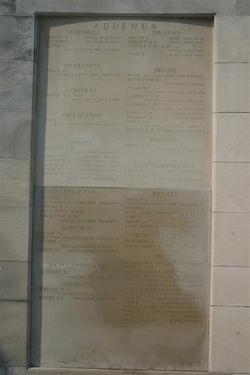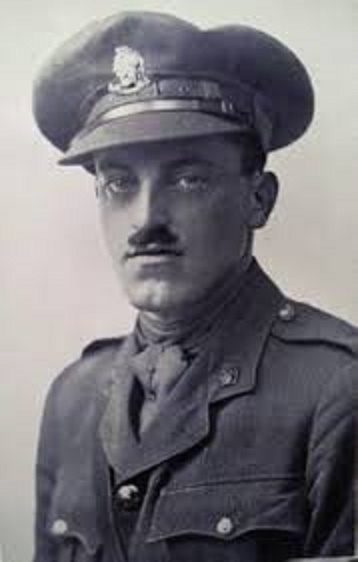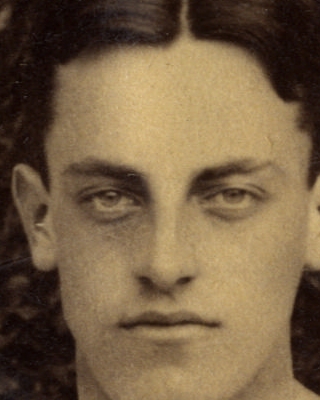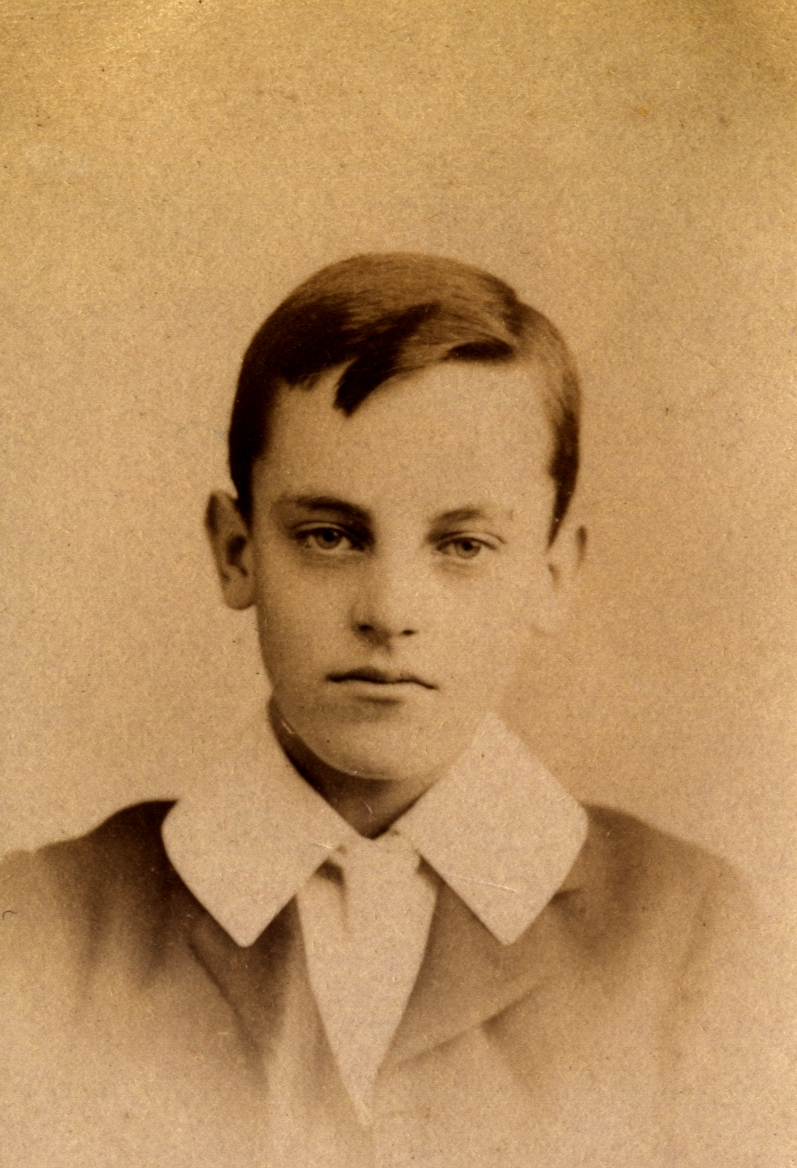Age: 28
Regiment/Service: London Regiment (Artists' Rifles), 28th Bn.
Honors: Mentioned in Despatches
Son of Stephen and Mary Chetwood, of Waltham Abbey, Essex.
---------
C Company, 1/28th (County of London) Battalion
(Artist's Rifles). Killed in action on the 30th of October
1917, aged 28.
Ernest Stanley Chetwood was born at Waltham Abbey in
Essex in 1889, the youngest son of Stephen Chetwood, an
auctioneer, and Mary (née Sell) Chetwood of 33 Sun Street,
Waltham Abbey. He was educated at Felsted Preparatory
School from September 1900 and at Felsted School until
June 1907. He was a member of the Hockey XI in 1907 and
was Captain of the Running VIII. He was also a Prefect.
Ernest worked as an underwriter's clerk for A. Cecil
Chapman Esq. and Others at Lloyd's and lived at Shaftsbury
Villa, Roydon in Essex.
He enlisted as a Private in the 28th (County of London)
Battalion (Artist's Rifles), rising to the rank of Corporal
before he was commissioned as a Temporary Lieutenant
in the same battalion on the 17th of October 1914. He
embarked for France on the 26th of October. Ernest was
promoted to Lieutenant on the 31st of August 1916 and to
Captain on the 18th of August 1917, with precedence from
the 1st of June 1916.
On the 1st of October 1917 the 28th (County of London)
Battalion (Artist's Rifles) received orders to proceed
to the Ypres front to take part in the assault on the
Passchendaele Ridge.
On the 28th of October they left their camp at Reigersburgh
to move up to the front line in preparation for the attack
which, due to the appalling state of ground, had been
making slow progress up until then. They spent 30 hours
waiting in reserve, during which time they suffered a
number of casualties from long range artillery fire. On the
30th of October they went forward to the attack with A
and B Companies in the vanguard of the assault and with
C Company, under the command of Ernest Chetwood, in
support. In order to reach their objective they had to cross
the Paddebeek, a small stream which constant shelling had
turned into a morass. As soon as the leading companies
emerged from their trenches into "a deep sea of mud"
they came under intense machine gun fire while a rain of
artillery fire fell on the support troops. Both rifles and Lewis
guns became clogged with mud within minutes and were
rendered useless, with those men who were wounded
drowning in the mud as they fell. The attack quickly came
to a standstill and the survivors attempted to consolidate
a new line on their side of the Paddebeek, but were forced
to withdraw to their starting line having suffered casualties
of around 350 men from an attacking force of 500. Ernest
Chetwood was among the dead.
The survivors came out of the line the following day and
marched to Eringhem.
Sir Phillip Gibbs, a war correspondent, witnessed the attack:
"The Artist's Rifles, Bedfords and Shropshires were trying
to get forward to other blockhouses on the way to the
rising ground beyond the Paddebeek. The Artist's and their
comrades were more severely tried by shellfire than the
Londons. No doubt the enemy had been standing at his
guns through the night ready to fire at the first streak of
dawn, which might bring an English attack. A light went up
and instantly there roared a great sweep of fire from heavy
batteries and field guns; 4.2s and 5.9s fell densely and in
depth and this bombardment did not slacken for hours. It
was a tragic time for our men, struggling in the slime with
their feet dragged down. They suffered but did not retreat;
no man turned back but either fell under the shell fire or
went on."
Ernest was mentioned in General Sir Douglas Haig's
despatches of the 7th of November 1917.
Age: 28
Regiment/Service: London Regiment (Artists' Rifles), 28th Bn.
Honors: Mentioned in Despatches
Son of Stephen and Mary Chetwood, of Waltham Abbey, Essex.
---------
C Company, 1/28th (County of London) Battalion
(Artist's Rifles). Killed in action on the 30th of October
1917, aged 28.
Ernest Stanley Chetwood was born at Waltham Abbey in
Essex in 1889, the youngest son of Stephen Chetwood, an
auctioneer, and Mary (née Sell) Chetwood of 33 Sun Street,
Waltham Abbey. He was educated at Felsted Preparatory
School from September 1900 and at Felsted School until
June 1907. He was a member of the Hockey XI in 1907 and
was Captain of the Running VIII. He was also a Prefect.
Ernest worked as an underwriter's clerk for A. Cecil
Chapman Esq. and Others at Lloyd's and lived at Shaftsbury
Villa, Roydon in Essex.
He enlisted as a Private in the 28th (County of London)
Battalion (Artist's Rifles), rising to the rank of Corporal
before he was commissioned as a Temporary Lieutenant
in the same battalion on the 17th of October 1914. He
embarked for France on the 26th of October. Ernest was
promoted to Lieutenant on the 31st of August 1916 and to
Captain on the 18th of August 1917, with precedence from
the 1st of June 1916.
On the 1st of October 1917 the 28th (County of London)
Battalion (Artist's Rifles) received orders to proceed
to the Ypres front to take part in the assault on the
Passchendaele Ridge.
On the 28th of October they left their camp at Reigersburgh
to move up to the front line in preparation for the attack
which, due to the appalling state of ground, had been
making slow progress up until then. They spent 30 hours
waiting in reserve, during which time they suffered a
number of casualties from long range artillery fire. On the
30th of October they went forward to the attack with A
and B Companies in the vanguard of the assault and with
C Company, under the command of Ernest Chetwood, in
support. In order to reach their objective they had to cross
the Paddebeek, a small stream which constant shelling had
turned into a morass. As soon as the leading companies
emerged from their trenches into "a deep sea of mud"
they came under intense machine gun fire while a rain of
artillery fire fell on the support troops. Both rifles and Lewis
guns became clogged with mud within minutes and were
rendered useless, with those men who were wounded
drowning in the mud as they fell. The attack quickly came
to a standstill and the survivors attempted to consolidate
a new line on their side of the Paddebeek, but were forced
to withdraw to their starting line having suffered casualties
of around 350 men from an attacking force of 500. Ernest
Chetwood was among the dead.
The survivors came out of the line the following day and
marched to Eringhem.
Sir Phillip Gibbs, a war correspondent, witnessed the attack:
"The Artist's Rifles, Bedfords and Shropshires were trying
to get forward to other blockhouses on the way to the
rising ground beyond the Paddebeek. The Artist's and their
comrades were more severely tried by shellfire than the
Londons. No doubt the enemy had been standing at his
guns through the night ready to fire at the first streak of
dawn, which might bring an English attack. A light went up
and instantly there roared a great sweep of fire from heavy
batteries and field guns; 4.2s and 5.9s fell densely and in
depth and this bombardment did not slacken for hours. It
was a tragic time for our men, struggling in the slime with
their feet dragged down. They suffered but did not retreat;
no man turned back but either fell under the shell fire or
went on."
Ernest was mentioned in General Sir Douglas Haig's
despatches of the 7th of November 1917.
Sponsored by Ancestry
Advertisement
Records on Ancestry
Advertisement








